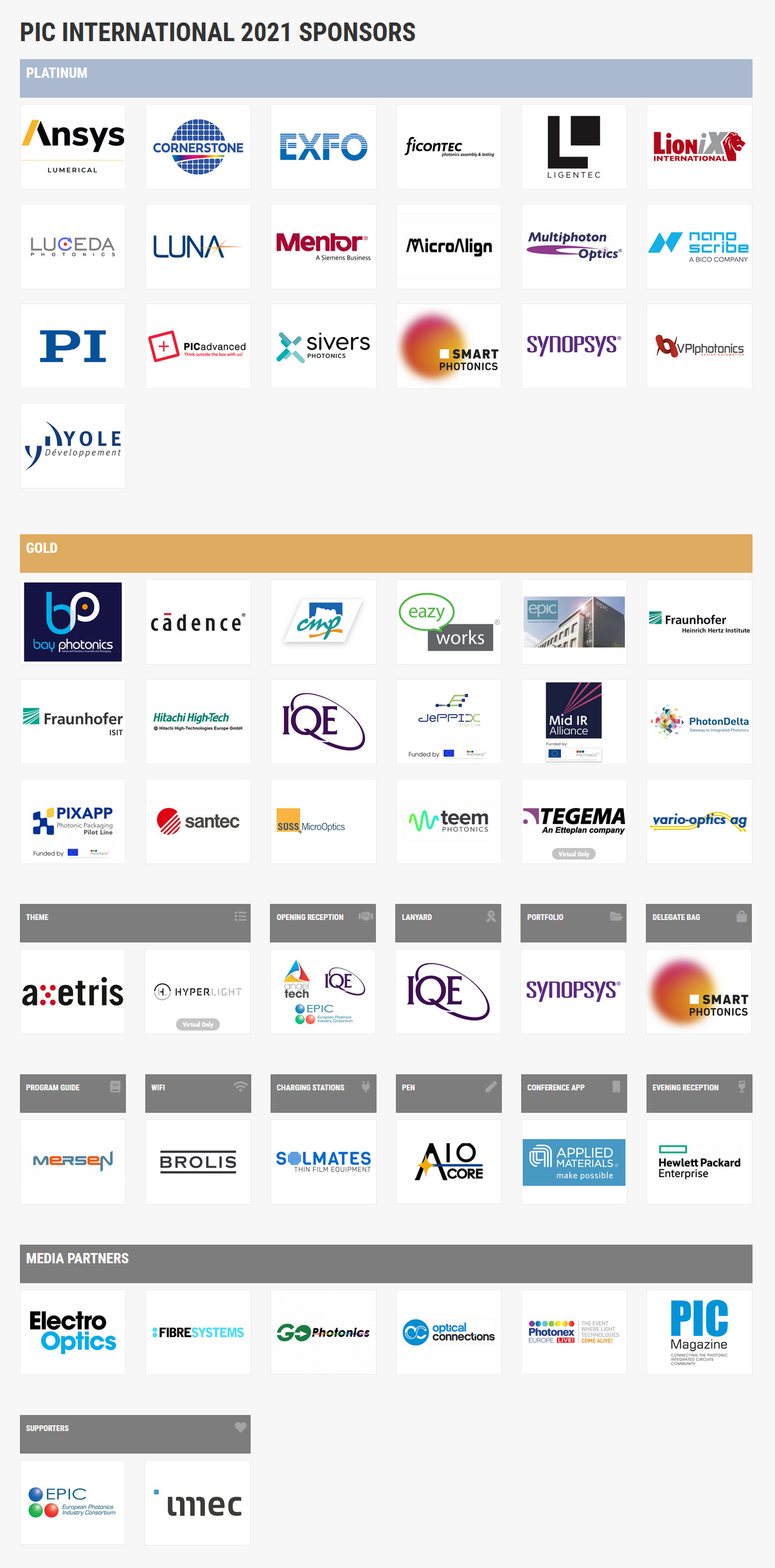A thrilling 6th Photonic Integrated Circuits International Conference with live participation exceeded everyones expectations in Brussels.
Co-Conference Chairs, Dr Michael Lebby and Dr. David Cheskis reflect on the 6th PIC International Conference that not only was well attended, but became the core conference for PICs globally.
We have just finished the 6th annual PIC International Conference, and again like in 2019 and 2020, it not only surpassed everybody's expectations, but thrilled us with live presentations, live audience, live panels, live Q&A and incredible technology updates and progress. The whole value chain was represented that ranged from wafers to epitaxial growth, devices, packaging, modules and systems, to social media that PIC International is the conference to attend if your interest is Photonic Integrated Circuits (PICs).
We again filled all of our seats, and believe it or not, we had standing only in many of the aural presentation sessions! There was much cross pollination between parallel sessions from CS International and Sensor Solutions International.
This year, there were over X00 delegates attending three days of highly condensed sessions on photonic integrated circuits (PICs) that focused not only on innovative technology, but how PICs could alleviate major headaches that optical networks, datacentres, telecommunications systems, etc see today. Many talks focused on how PICs could be implemented into novel and innovative applications to move the industry forward, and keep the industry moving forward such as Automotive LIDAR, sensing, displays, healthcare, etc. As in 2020, one of the biggest drivers for PICs are fiber optic communications for datacentre interconnects. A number of global giants conveyed huge opportunities for PIC innovative solutions for their businesses that addressed high speed, low power consumption, innovative packaging (via co-packaged solutions), reliability, and cost effectiveness.
There were 2 live panel sessions that were chaired by Dr. Bill Ring and Dr. Jose Pozo that addressed volume scaling and opportunities for PICs as well as the growing opportunities for PIC in Automotive LIDAR. The panels were filled with technical experts that are internationally known PIC technologists. Both of these live panels generated lots of Q&A and live discussion.
There were also talks that explored PIC based technologies outside of fiber optics, and those areas included healthcare, bio, sensing, and LIDAR for automotive applications. One of the most promising segments for PICs is the use of PICs in the automotive market, and this was forecasted to grow very quickly over the next decade.
The conference discussed in detail incumbent PIC technologies such as InP, Silicon Photonics, and GaAs, as well as exciting new and emerging technology platforms such as Polymer Photonics (PP) and Dielectric Photonics (DP). Hybrid PICs was used to denote the mixing of various technology platforms to improve the overall performance of PICs. Examples were the use of electro-optic polymers onto silicon photonics, and as well as dielectric materials for integrated Photonic solutions on silicon wafers.
The incredible growth of silicon photonics continues with an increase in popularity and acceptance as a new incumbent technology. Indium phosphide as one of the incumbents was demonstrated to show higher density PICs that are expected to impact the 5G markets, and there were exciting reports of PIC in novel 3D sensing and LIDAR applications.
The conference also discussed both datacentre and telecommunications opportunities for PICs with forecasts for new architectures, standards, technologies and cost expectations. The latest results in the PIC field were also presented and showed a significant performance upgrade towards transceivers at 800Gbps and some speakers spoke of 1600Gbps, and beyond. Some results presented included the use of electro-optic polymers that generated speeds of over 100GHz bandwidth.
There were a number of exciting sessions, where one session discussed improvements in PIC infrastructure for designing and manufacturing robust and reliable PICs using software tools for modelling, simulation, and production. This was supported by many PIC talks that addressed PDKs and other metrics needed to quickly grow PIC markets.
This year, new and innovative talks discussed how PICs based technologies can enable new products that are more miniature, low power, and high performance, which is becoming especially important for hand-held battery powered diagnosis and health monitoring products.
The conference speakers showed that the result of designing PICs for the popular verticals of telecommunications and data communications and how these solutions could easily be applied to medical, measurement, automotive, and other industrial applications for PICs.
Networking was truly first class with a perfectly designed exhibit right next to the conference rooms that gave the attendees incredible opportunities to meet other folks in the PIC infrastructure. The excitement of a live conference, and to some, the first live conference in 2years clearly showed amongst attendees. While virtual is great, and virtual allows work to get completed, and families to meet, live is better. Live is much better!
The good news is that some of these opportunities will be high volume such as GaAs VCSEL arrays for sensing (as used by mobile phones), as well as high density PICs for short distance optical interconnects. The opportunities that consumer markets will bring to PIC based technologies is only just beginning, and we will have to wait to see how the extreme high-volume ramps will play out over the next year.
All presentations showed a number of improvements in the technology over the past 24 months. PIC markets are growing strongly to many 10s of $B over the next decade, as well as the scalability of PIC technological platforms. The rise of the hybrid PIC, the co-packaged platform, and shared foundries showed that customers are now more open than ever to find the right PIC solution for their particular portfolio.
A focused, thrilling, and well attended conference, with a high level of technical content, PIC International surpassed itself again in 2021. PIC International is the conference to attend for the latest and greatest in photonic integrated circuits and has become a truly global and credible event. Have the event live really made the difference. You’ll have to attend next year to immerse yourself in the excitement!
Michael Lebby

